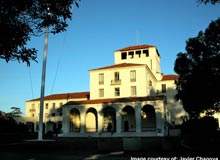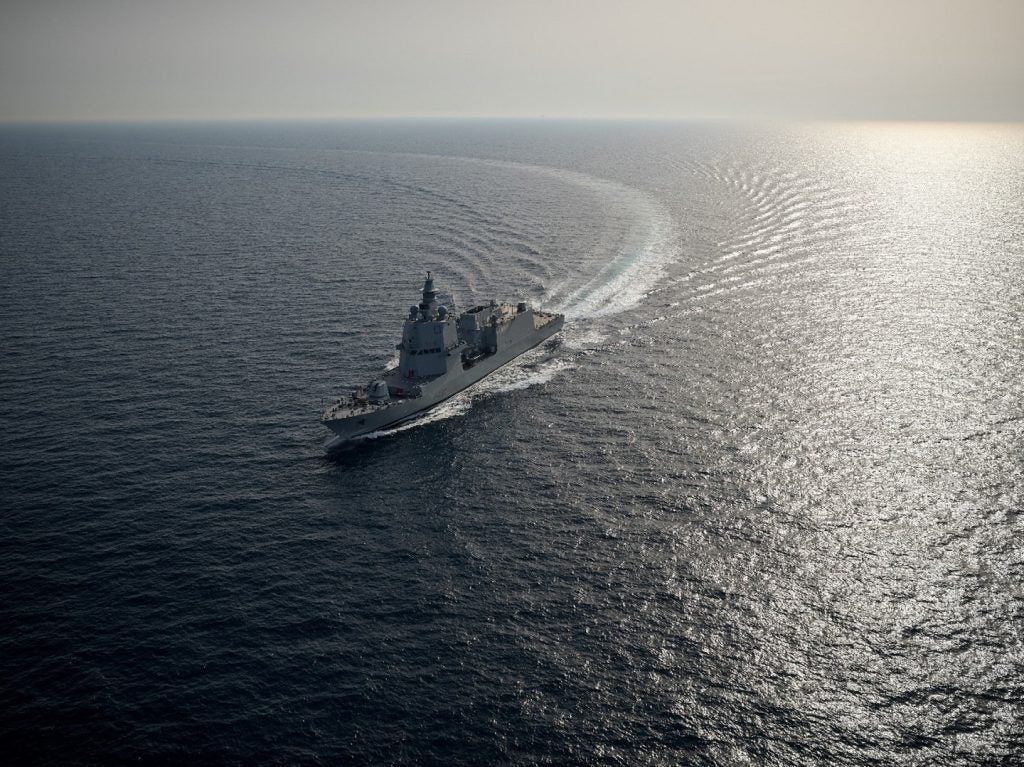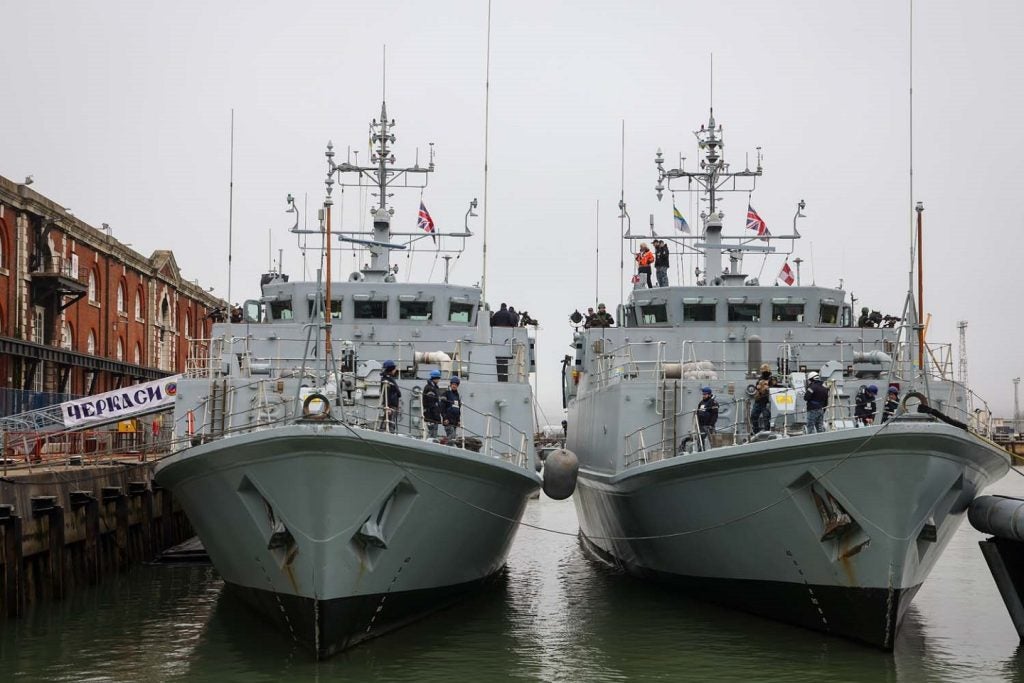
It is a sunny, hot July morning in Monterey, California, a vibrant coastal city a little more than 100 miles south of San Francisco. This is a community where many people would spend a part of their summer day at the beach.
But, this is not the case for Captain Kathryn Pegues, a West Point mathematics graduate and now, a graduate student majoring in operations research at the Naval Postgraduate School (NPS).
Classes started in September for the third academic quarter, and this morning Captain Pegues is racing to a strategy management class instead of the beach, only two blocks away.
Captain Pegues is an army career officer – one of 1,800 currently enrolled graduate students at NPS. Students are recruited from all five branches of the US military – navy (making up 45% of the enrolment), army, air force, marines and coastguard – and foreign military armed forces.
How well do you really know your competitors?
Access the most comprehensive Company Profiles on the market, powered by GlobalData. Save hours of research. Gain competitive edge.

Thank you!
Your download email will arrive shortly
Not ready to buy yet? Download a free sample
We are confident about the unique quality of our Company Profiles. However, we want you to make the most beneficial decision for your business, so we offer a free sample that you can download by submitting the below form
By GlobalDataForeign military students, who have included Jordan’s King Abdula bin Al-Hussuen and his sister, Princess Aisha, a colonial in the Jordanian navy, Admiral Ozden Ornek, commander of the Turkish Naval Forces, Elyezer Shkedy, chief of staff of the Israeli Air Force and professor Pao Chuen, chief defence scientist of Singapore’s Ministry of Defense, typically make up approximately 10% of each graduating class at any one time.
See Also:
It is not unusual to find students from between 55 and 60 countries on the campus, fewer than 10% of which are female. In Captain Pegues’ class, for example, she is one of only two female officers.
IT’S ALL ABOUT RESEARCH
Make no mistake: this school is not a cloak and dagger place, and it is not a school for spies or spooks. The emphasis here is on research – some classified, some in the public domain – that focuses on engineering, emergency medical advancements, information technology, computer technology and international relations – all important components of modern military operations.
It is that emphasis that attracts Captain Pegues: “I wanted an applications-oriented operations research programme. I got it here,” She says.
Captain Pegues has completed her first year of a two-year Master’s programme. It usually takes students between 15 and 21 months to earn a Master’s degree and an additional 24 to 30 months for a PhD. There is also an executive MBA sequence, and more recently an 18-month programme in homeland defence and security research co-sponsored by NPS and the US Department of Homeland Security.
The latter programme is designed for state, local and federal officials, including police and fire chiefs, home security and emergency management personnel and public health directors. To date, more than 150 government officials have earned Master’s degrees in this particular programme.
NPS also is home to the Center for Information Systems Security Studies and Research (CISR) and the Center for Homeland Defense and Security (CHDS). CISR is a centre for defence-related research and education in information assurance, inherently trustworthy systems and defensive information warfare; and CHDS has the first homeland security Master’s degree programme in the US.
RELEVANT RESEARCH
Colonel Andy Hernandez, associate dean of the graduate school of operational and information sciences, stresses a major NPS mission is to provide relevant and cost-effective research for the US armed forces. Students and faculty can provide independent assessment of proposed solutions to naval issues and pre-deployment evaluation of new technologies.
Although NPS is involved in many research programmes it is still the primary mission of the school to provide graduate level education to its officers. The programmes are designed to accommodate the unique requirements of the military. Research is applications oriented, Colonel Hernandez emphasises. “Our students attempt to develop possible solutions for military personnel, at home and in the field.”
He notes that few people outside of industry, much less the public, realise that many important services and devices have their beginnings in military research. For example, many triage systems used in hospital emergency rooms and treatment protocols are the result of military research.
Colonel Hernandez adds: “In many programmes each student is required to conduct research and write a thesis, as they might if they were enrolled in a graduate programme elsewhere, but these projects are not esoteric exercises. Instead, they focus on critical concerns of the Navy and the other armed services.”
“What makes research at NPS special is that it is conducted in an international setting; where American military students work with their military contemporaries from other countries.”
TECHNOLOGY TESTING
NPS has been a testing ground for advanced research and has been behind cutting-edge technologies as diverse as numeric meteorological prediction sciences to ultra-high complexity computer model simulations for the US Department of Defense.
Laboratory facilities on the campus include the turbo propulsion laboratory, ocean acoustic observatory, interactive digital environmental analysis (IDEA) laboratory, secure space systems laboratory, centre for autonomous underwater vehicle research, directed energy simulation laboratories, MOVES (modelling, virtual environments and simulation), motion capture studio and the radar / electronic warfare laboratory.
Some of the research is sponsored or supported by industry and can result in cooperative research and development agreements with industry (known as CRADAs in the United States). There is also cooperative research with universities and government laboratories. CRADAs are an effective means for an institution to work with industry to commercialise and exploit new technology. Technology developed by NPS students and faculty is patented by the school.
According to the National Science Foundation’s most recent national R&D Expenditures Survey, the NPS ranked in the top 25% of institutions in total R&D expenditure.
Every year, an annual acquisition research symposium for industry takes place to encourage technology transfer and spin-offs of emerging technology.
ON-GOING RESEARCH PROJECTS
NPS civilian physics professor Dr Nancy Haegel and her students are working on an anti-fratricide patch that can identify friend or foe on the battlefield. With students Captain Patrick Williams, USMC and Lieutenant Johannah Shumacher, USN, Dr Haegel is working with Add-Vision, Inc., Scotts Valley, California to develop and test low-light emission polymer emulsion technology.
A prototype is a business card-size patch worn by military personnel that can be ‘seen’ by night-vision goggles in the field.
Modelling is an important component of research, and many NPS students are working on creating algorithms for use in the military field. One includes developing a control algorithm that they hope will create a ‘smarter’ spacecraft system where a battle group commander can tell the system what to do, rather than how to do it.
Another is on weather forecasting. Everyone knows how a quick-moving, unexpected storm can ruin a summer picnic. It’s not difficult to imagine the chaos rapid weather changes can make on military operations. Researchers now are attempting to incorporate climatological forecasting into Department of Defense operations.
NPS’s future as an institution and that of the nearby Defense Language Institute, were in peril a couple of summers ago when both schools were placed on a list of possible base closures by the Base Realignment and Closure Commission (BRAC). The good news was that BRAC voted unanimously to keep both institutions in their respective campuses.





